The Complete Guide to Pouring Latte Art
A complete guide from beginner to more advanced designs, highlighting what you need and what you need to know to pour latte art.
Even if the only requirements for a tasty milk beverage are delicious espresso and luxurious milk, so often the piece de resistance is the latte art decorating the top of your drink. It’s the first sign of a craftsperson that a consumer gets to appreciate, a promise of quality that awaits, and a photo opportunity that’s become a gimme for Likes on the ‘Gram. So, is this skill meant only for baristas with expensive tools and loads of training? Of course not! If you can make espresso and microfoamed milk you can pour delicious and dazzling portraits for yourself, your friends, and your guests whenever duty calls. Let’s get started and talk through what you’ll need to know to become the Matisse of mochas, the Caravaggio of cortados, and the Longhi of lattes.
Elements
Good espresso and properly textured milk are the material requirements for latte art, but there are a handful of details to the process that make it all possible.
The first task to focus on is to find how to hold your body comfortably while pouring, without feeling unnecessarily tense or contorting yourself into odd or uncomfortable positions. Arms at your sides, elbows down, with the act of pouring all happening directly in front of you is the most natural position for most folks. Finding and feeling comfortable in this posture will also make it simpler to pour symmetrical designs that are oriented well in the cup, either directly in line with your handle or directly perpendicular to it.
Latte art is the result of using a little chemistry and some physics to your advantage, which can be accomplished by considering three primary factors to pouring—pour speed, proximity to the cup, and placement of the pitcher spout.

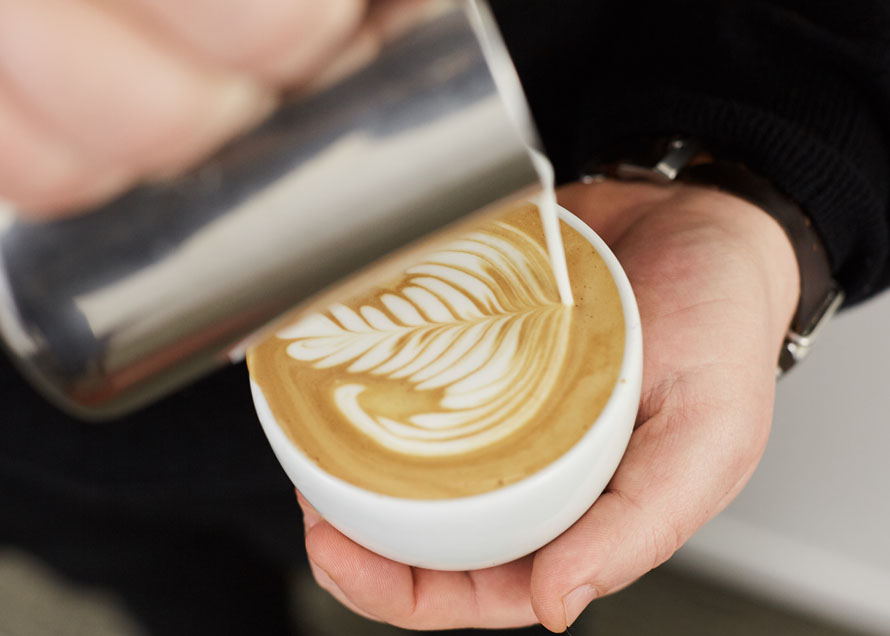
Pour Speed will vary through the process, beginning with a slow flow rate as you fill the cup so as to not disturb the crema too much, and a quicker rate as you make your design to be sure that your art blooms and beautifully fills the surface of the cup. Different pouring speeds can achieve different looks in your design as well—slower flow will leave bolder strokes in your design, while a high flow rate can be used to create delicate lines, sink parts of your design to create negative space, or to cut cleanly through your artwork.
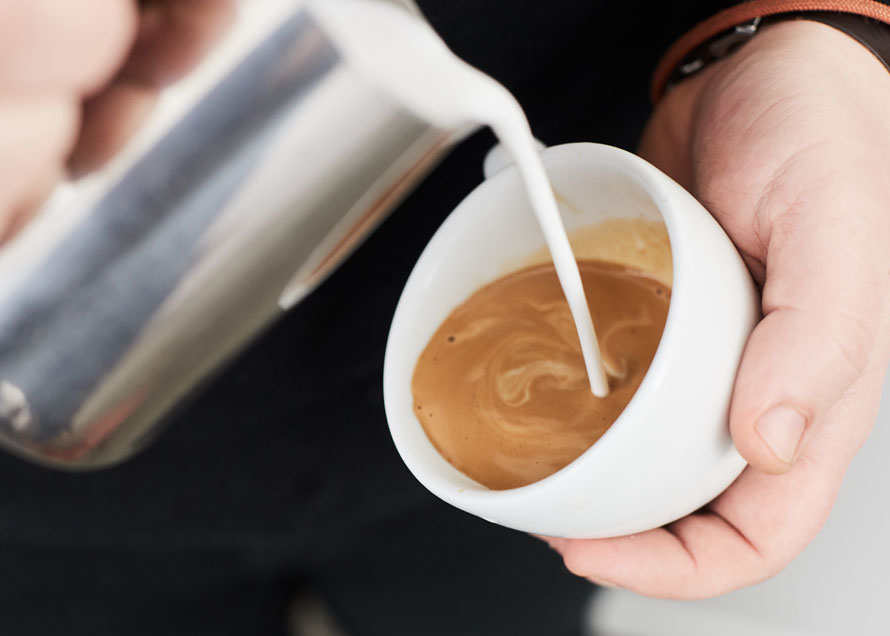
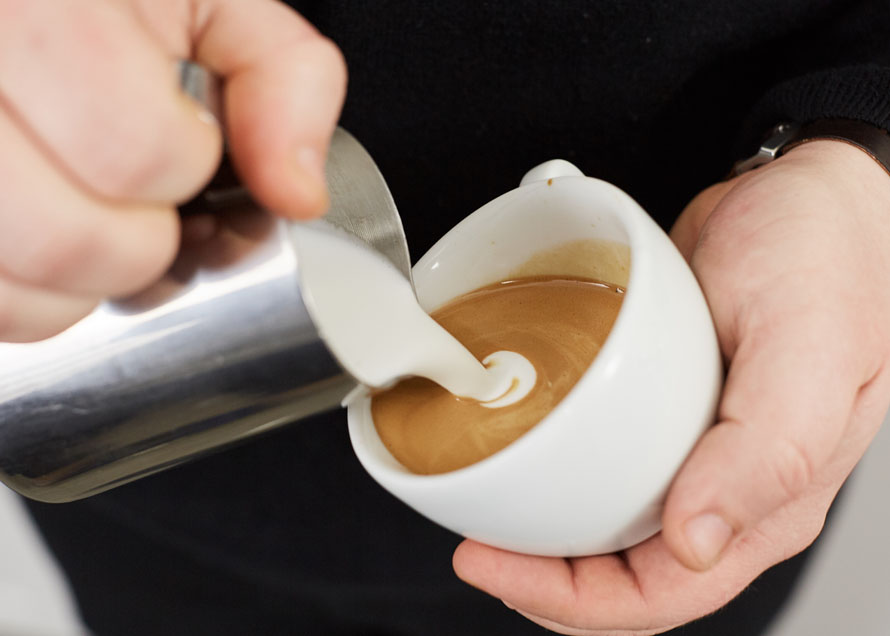
Proximity to the cup with your pitcher will determine whether you successfully paint milk onto your espresso, or simply mix the two together. Your pour needs to begin a few inches above your cup, using gravity to drop your milk straight through the crema to blend with the liquid espresso underneath, leaving a clean canvas on top while you fill the cup enough to make a design. Actually drawing with your milk will require your pitcher spout to be as close as possible to the surface of the crema; this allows for the liquid milk to flow through the surface and for microfoam to float on top of your drink by using lateral flow and lower velocity.
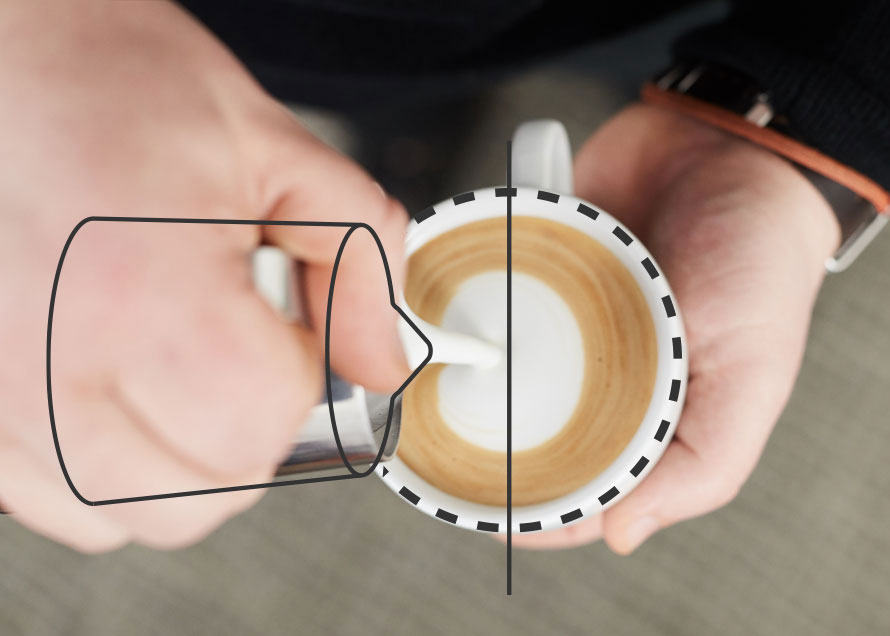

Placement of your spout will determine where your design appears in the cup. We can think of the surface of the beverage being broken into three horizontal sections relative to the surface of the cup—the center, below center, and above center—which can provide some guidance for how to place designs on your drinks. The tip of your spout corresponds with the top of your design and not the middle of it, meaning that if you want to pour a heart in the middle of your cup you’ll need your spout to be placed above the center. Even for complicated designs it’s best practice to always pour with your spout no more than halfway into the cup, this will help you center designs and keep you from disturbing the shallow part of the crema, which ruins your coffee canvas.
Once you get comfortable managing these factors, latte art is all about choosing and mastering a design; but, the process of producing white shapes on brown coffee all comes down to understanding pour speed, proximity, and placement!
Tools of the Trade

• Coffee and an espresso machine. Whether it’s a powered machine with a built-in steaming system or something simpler like a manual espresso brewer, you’ll definitely need espresso.
• Milk (or an alternative!) and a steam wand, or another way to produce microfoam in your milk.
• A cup to pour into. It’s easiest to pour into cups that are bowl shaped or rounded inside as opposed to square or cylindrical.
• A steaming pitcher with a good pouring spout to help you control the flow of your microfoamed milk.
Process
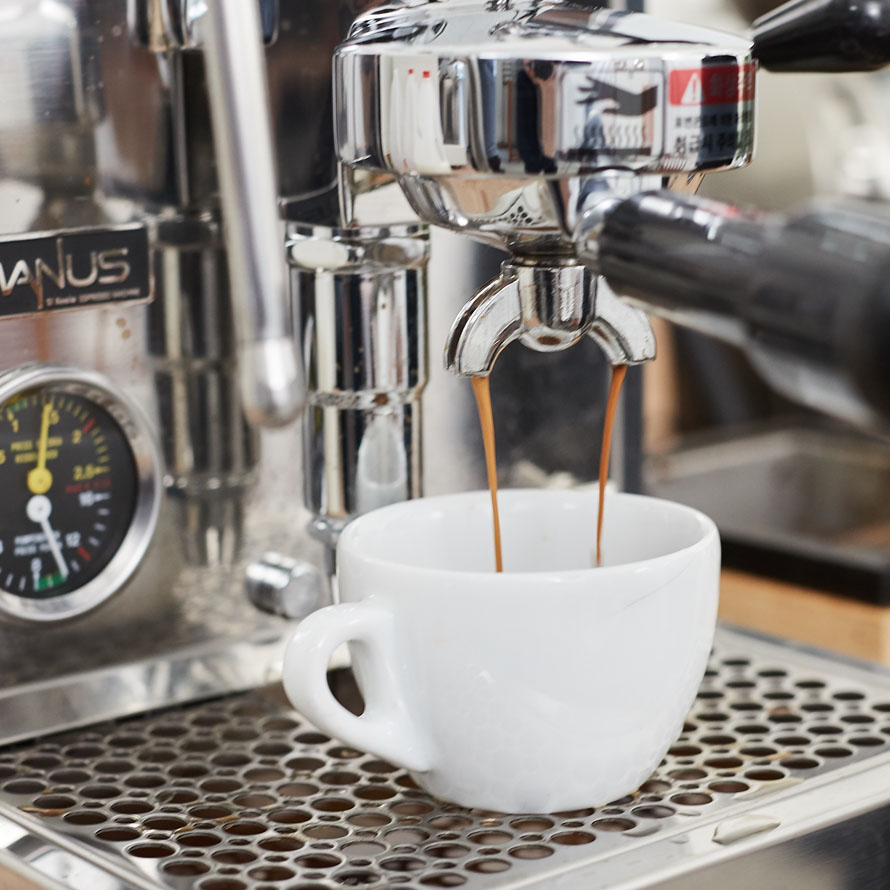
Step One
Prepare your espresso and milk.
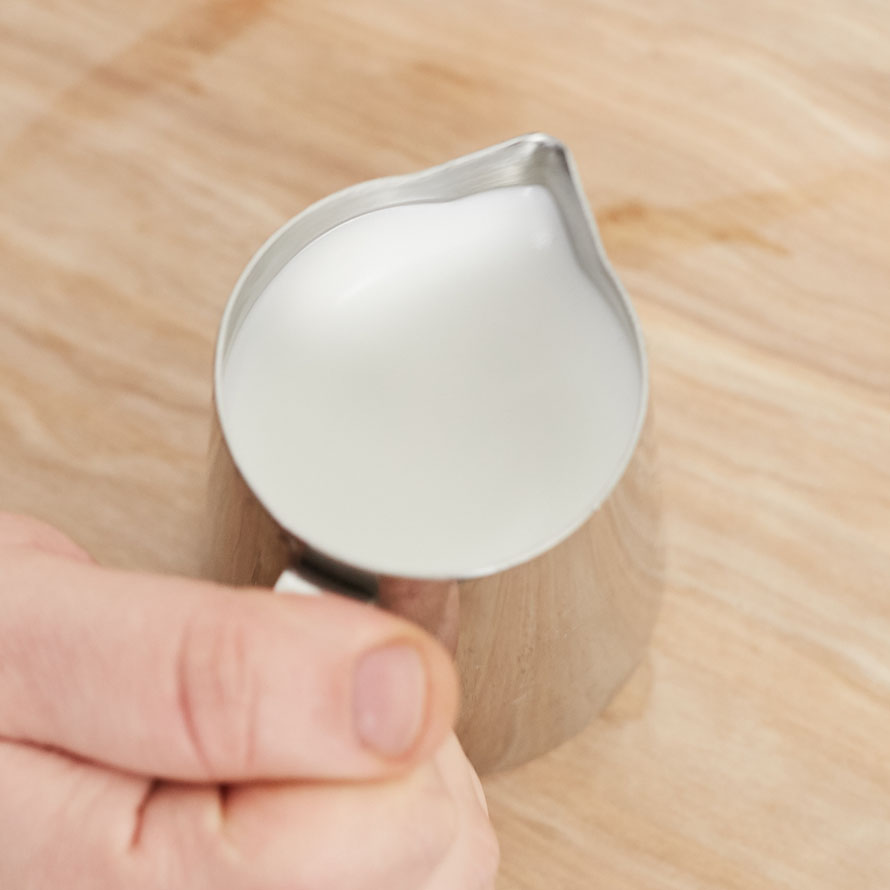
Step Two
Groom your milk for the best texture.
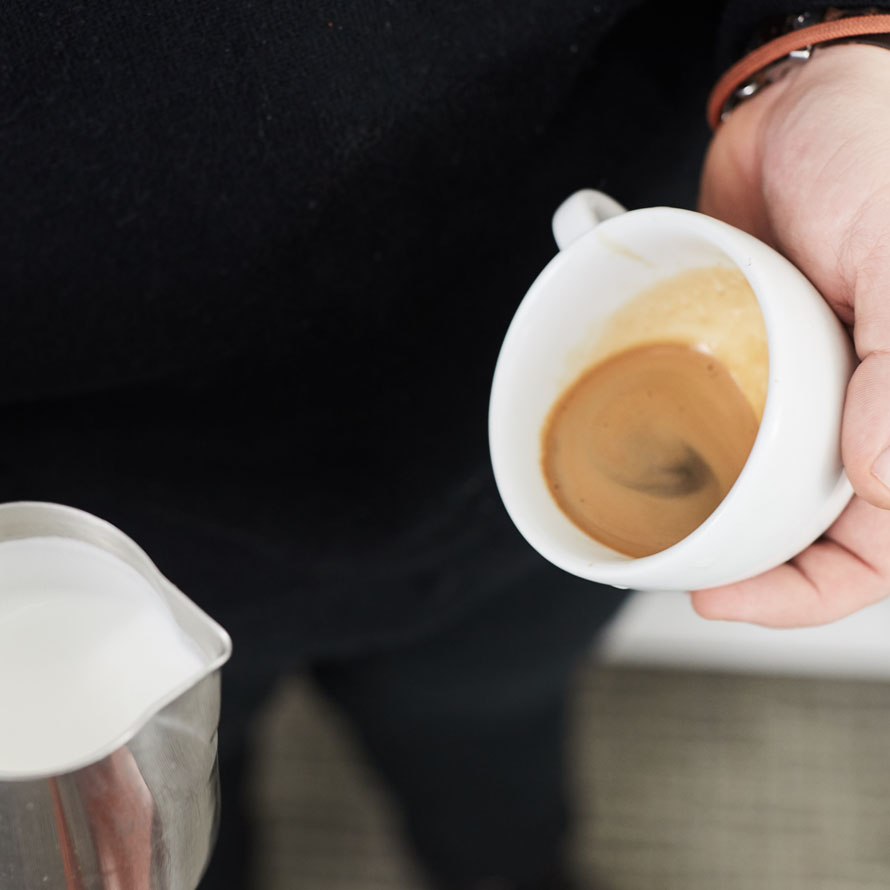
Step Three
Tilt the cup you’re pouring into.
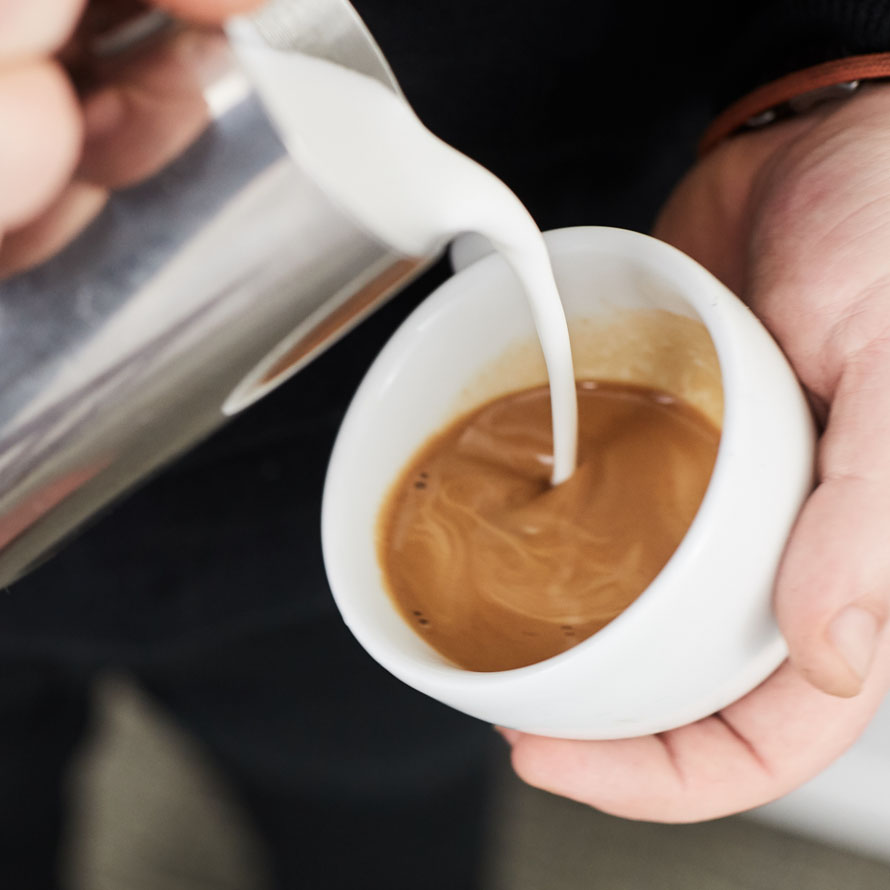
Step Four
Pour high and slow to start.
• Pull your espresso and steam (or otherwise froth) your milk—the texture after steaming should be the consistency of wet paint, and the milk should have expanded 20–35% (depending on how foamy you like your coffee). Making these simultaneously is ideal, but if that’s not possible be sure to do your best to have them both ready as close to the same time as you can—too much resting time for either component will make it difficult, if not impossible, to produce good latte art with them.
• Groom your milk by swirling it in your steaming pitcher. This will incorporate the liquid and microfoam together, making it easier to pour intentional and fluid shapes, while also producing a good shine on top of your milk. If your milk sits for too long after steaming (30 seconds or more) it’ll become increasingly difficult to make a homogenous blend of milk and foam, which is one major reason that you want your espresso and milk done right around the same time.
• Tilt the cup you’re pouring into at a 30–45° angle.
• Pour slowly from a height of a few inches (7–8cm) above the cup, aiming to pour milk directly into the deepest part of your pool of espresso. Continue the high and slow pour until your coffee and milk reaches the lip of your cup, then stop the stream of milk.
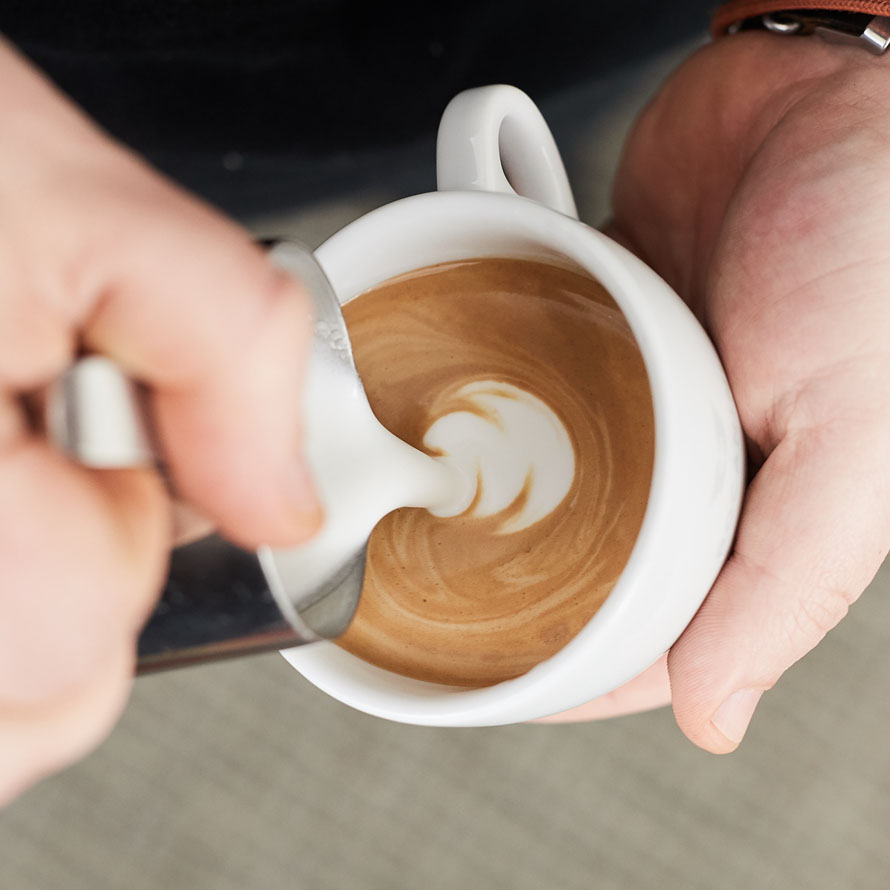
Step Five
Pour low and fast to start your design.
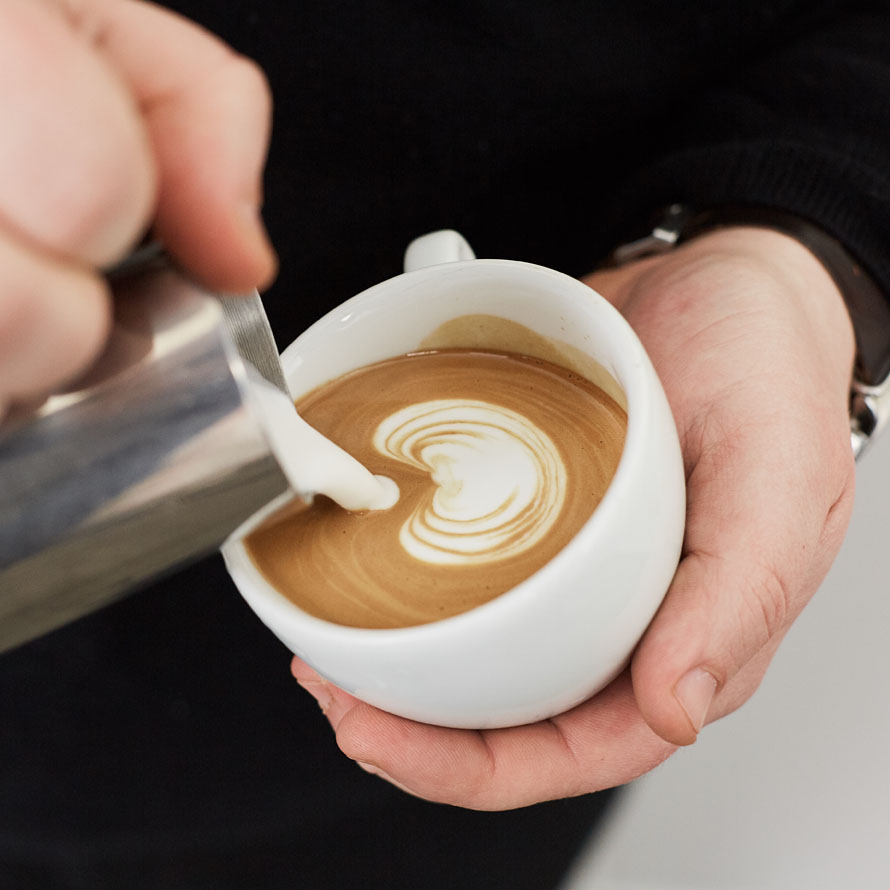
Step Six
Level out your cup as it fills.
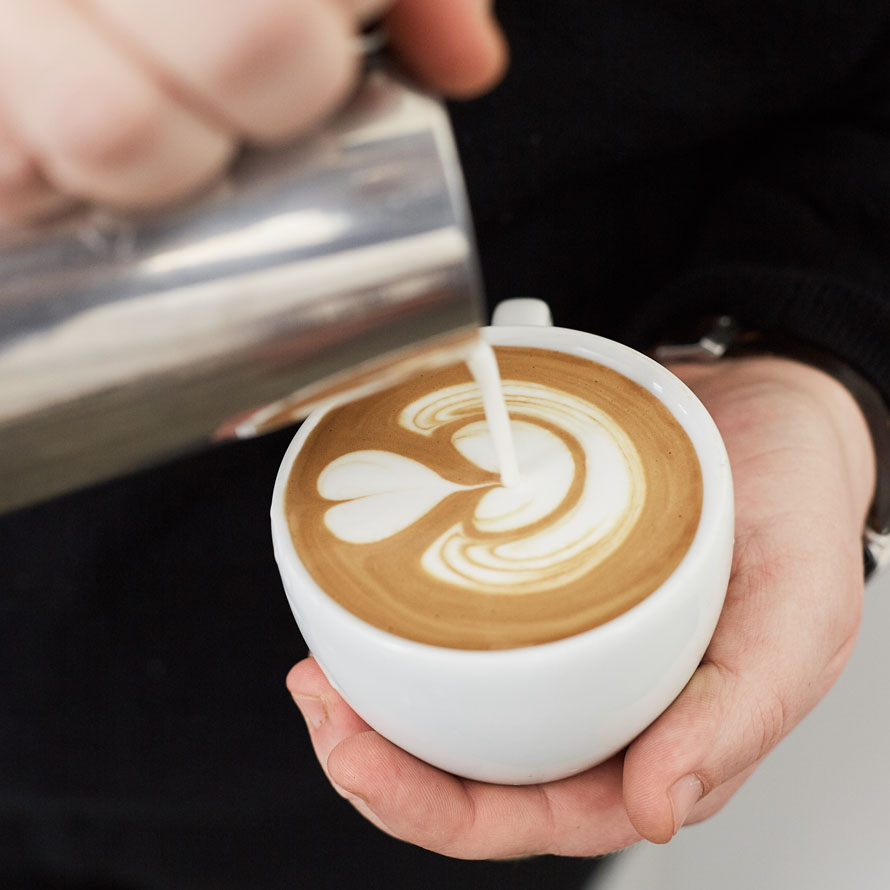
Step Seven
Save space to finish your design.
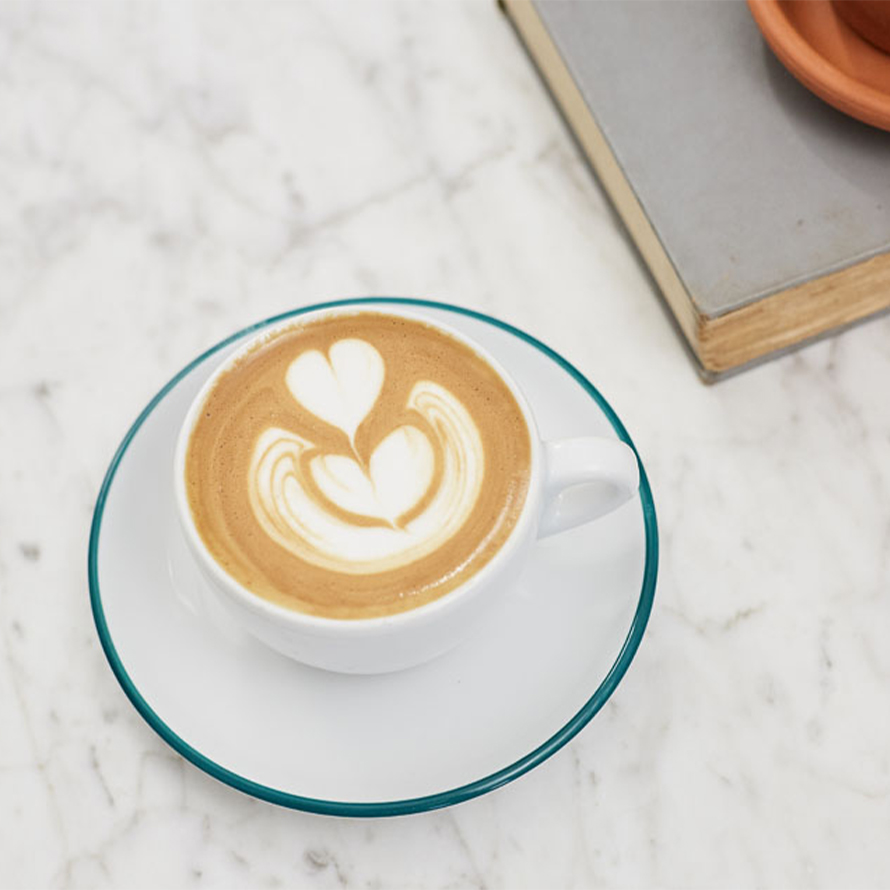
Step Eight
Serve your drink to its lucky recipient!
• Bring your pitcher down to the level of the cup and begin pouring your shape with the pouring spout just above the liquid level. Pour with greater flow speed than the high-and-slow pour you started with.
• As your shape blooms and the cup fills, slowly flatten out the angle of your cup.
• Finish your design either by stopping the flow of milk entirely, or by slowing your flow, raising your pitcher, and cutting through your shape.
• Serve your drink to its lucky recipient!
More than anything, latte art is about practice. Learning the motions to control shape, flow, wiggle, and other artistic inputs will take some repetition. You can start simple, with shapes like a monks head or solid heart to get a feel for the process, then you can learn skills like wiggling your milk to create a rosetta, or stacking hearts to make a tulip.
Basic Skills
Almost every common latte art design can be made using four basic skills—pouring a solid and symmetrical dot, producing a smooth and even wiggle to make flowing waves in your design, cutting cleanly through your design with the flow of milk to finish your creation, and stacking shapes into or on top of one another to make multi-layered designs.


The Dot is the basis for a lot of form-building in latte art; you’ll use the Dot for Tulips, Hearts, Swans, and tons of other designs of all difficulty levels. A single symmetrical Dot in the cup with an indentation at its top is called a Monks Head, the simplest design in latte art and the best design to practice if you want to improve your flow control, shape placement, and symmetry in your pouring. You can pour a Monks Head by holding your pitcher in place above the center of your cup, increasing the flow of milk as it blooms in size, and leveling your vessel out as it gets full.
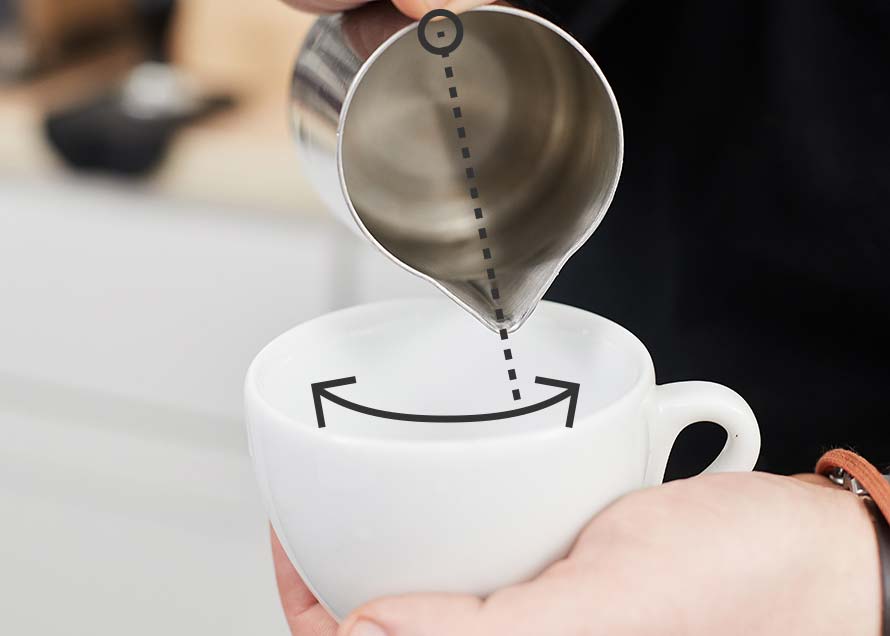
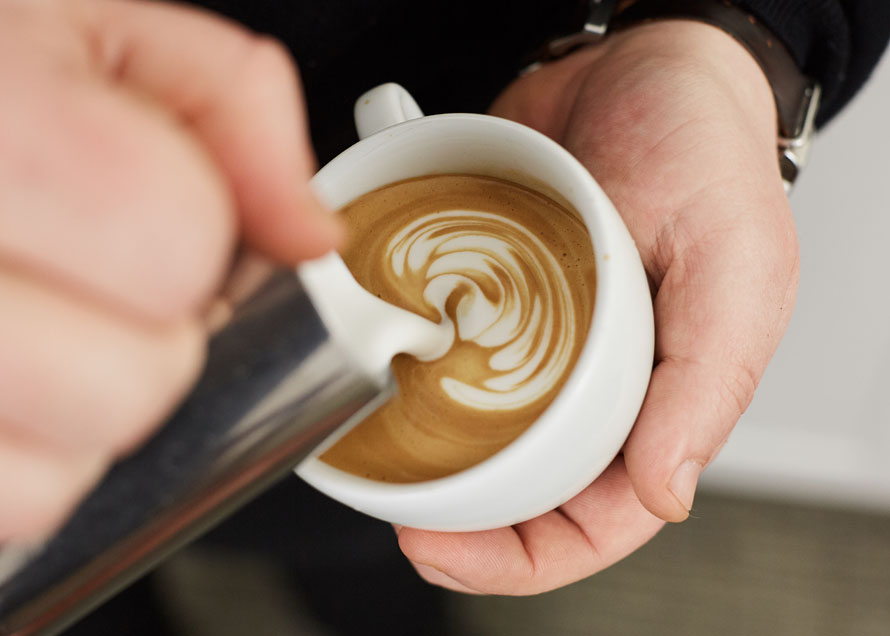
The Wiggle will make waves or ripples in your design. This should be accomplished with small motions in your fingers holding the pitcher, and not with any dramatic motion in your wrist, arm, or elbow. Your goal is to create a smooth pendulum motion with the flow of milk; the rate of your wiggle can be slow (for broad waves) or quick (for tight waves), so long as it’s smooth.

The Cut can be used to drag shapes like the heart into their final form, or can be used to bisect and stitch together other shapes like a rosetta. This move can be accomplished by slowing the flow of milk, raising your pitcher, and moving the pitcher across the design.


Stacking/Pushing is the process used to build multi-layered designs like the Tulip. Stacking happens when you pour multiple Dots in succession on top of one another, placing one Dot after another with static spout placement in different parts of the cup (e.g. first in the center of the cup, and then above the center).
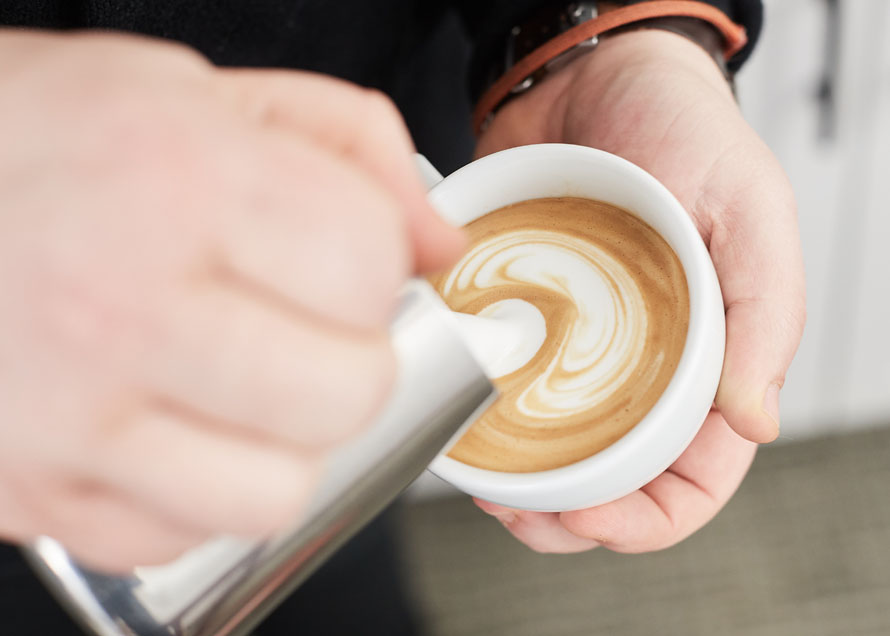
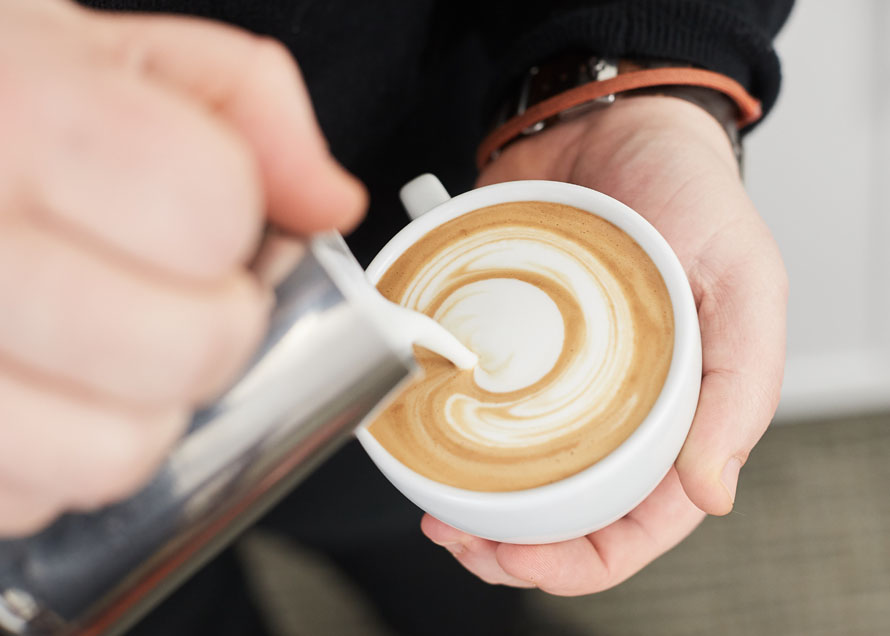
Pushing is the process of sliding Dots into place, using the flow of milk and smooth movement of the pitcher spout to nestle a Dot into another shape. Pushing typically results in a blooming or wrapping effect for the shapes being Pushed into, allowing you to do things like nestling a Heart into another Heart for a Framed Heart.
Basic Designs
So how do you use these skills to make the forms that you see your favorite baristas turning out? By learning which basics contribute to which designs!
The Heart:
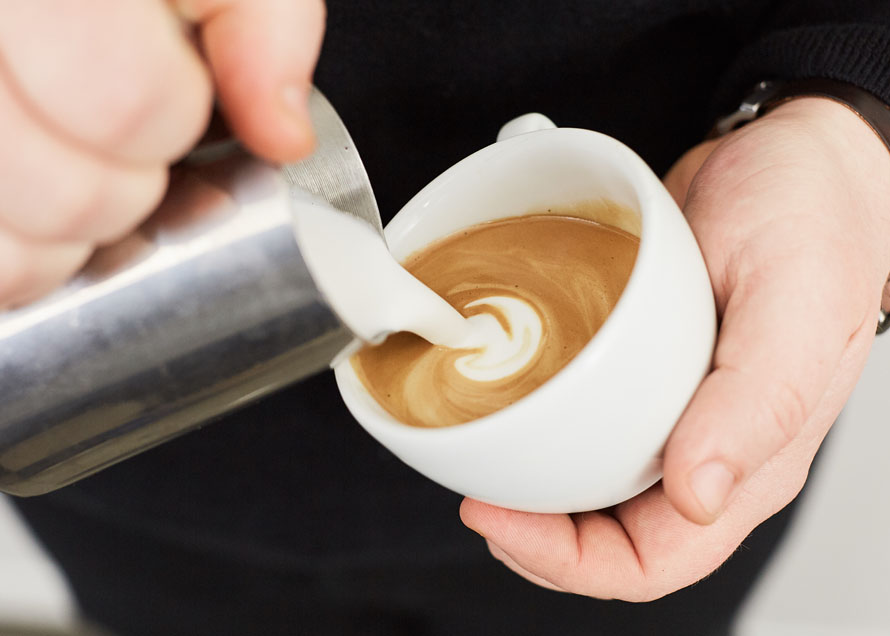

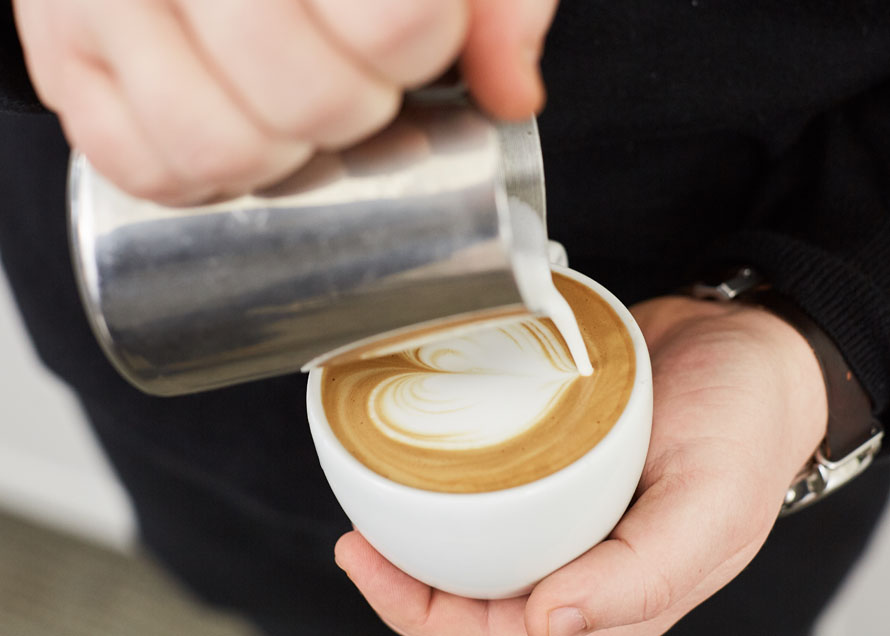
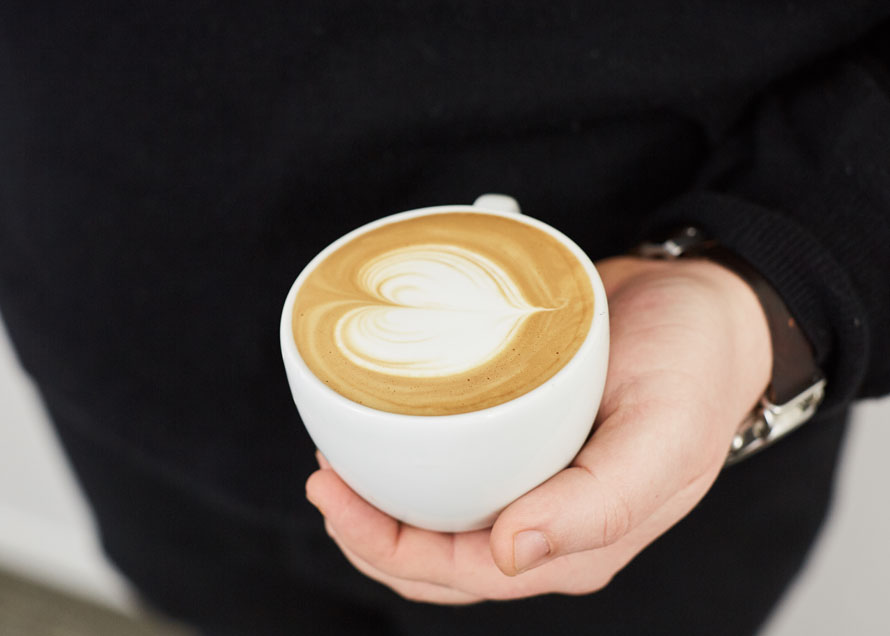
• For a centered Heart, start your design above the center of your cup.
• Begin pouring a Dot like you’re pouring a Monks Head.
• When your cup is nearly full and you’re ready to finish your pour, slow the flow of milk and Cut through your design. Start your Cut near the surface of the liquid and moving away slightly from the surface as you get farther through the design.
• Feeling fancy? Throw some slow Wiggle in while you pour your Dot, before the Cut through your shape, for a textured heart!
The Rosetta
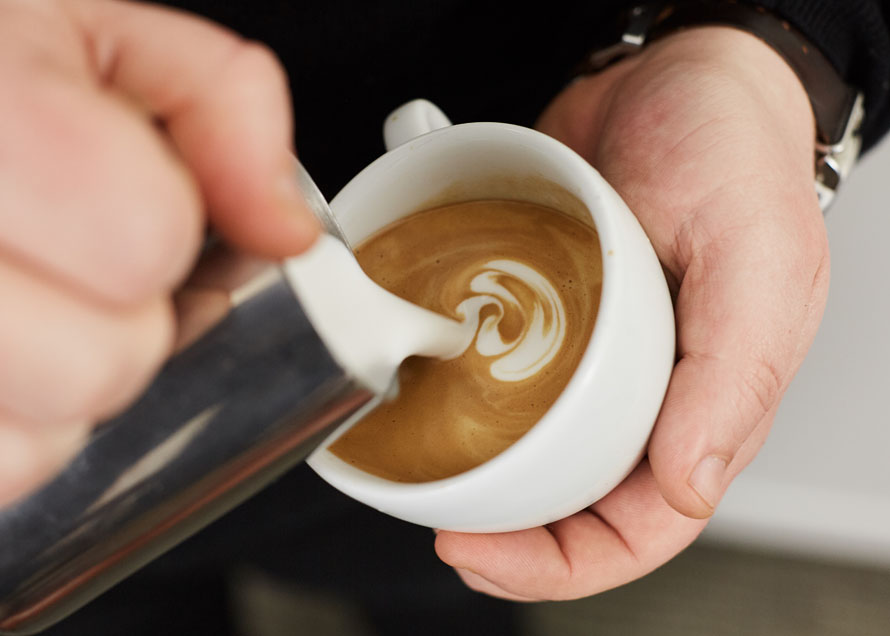

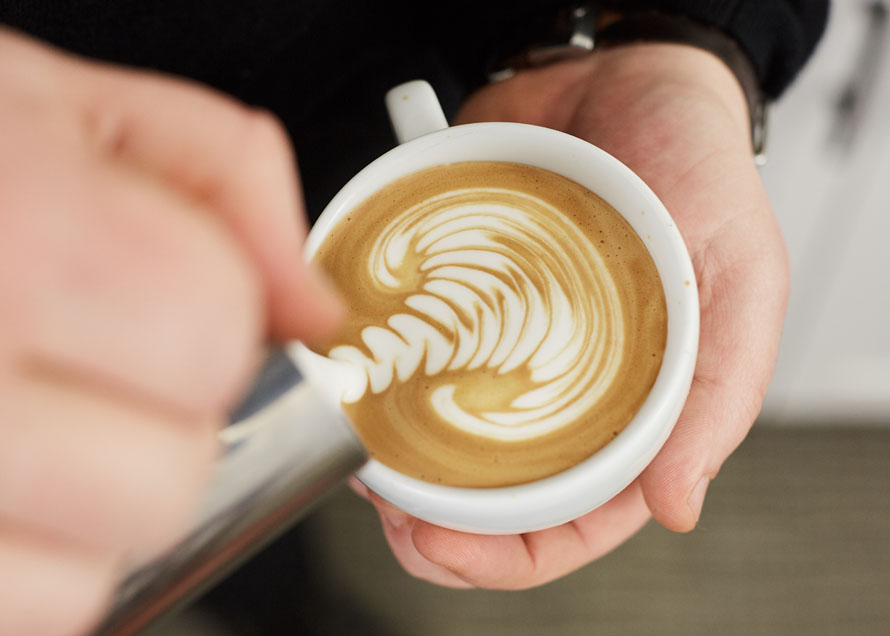

• Begin your design in the center of your cup, using the Wiggle and a quick flow rate to bloom a flowing base.
• Slow your Wiggle and flow a bit, pulling out of the base and drawing waves toward the top of your cup.
• Pause at the top of your design and increase flow a bit to pour the beginning of a Heart.
• Cut through the whole design, giving your Heart its shape and stitching your waves into the leaves of your Rosetta.
The Tulip:
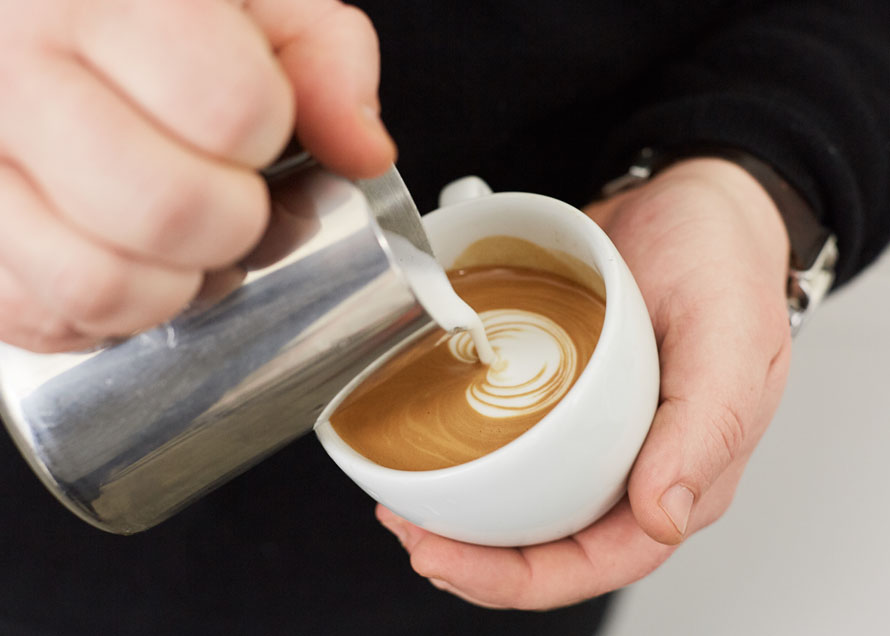


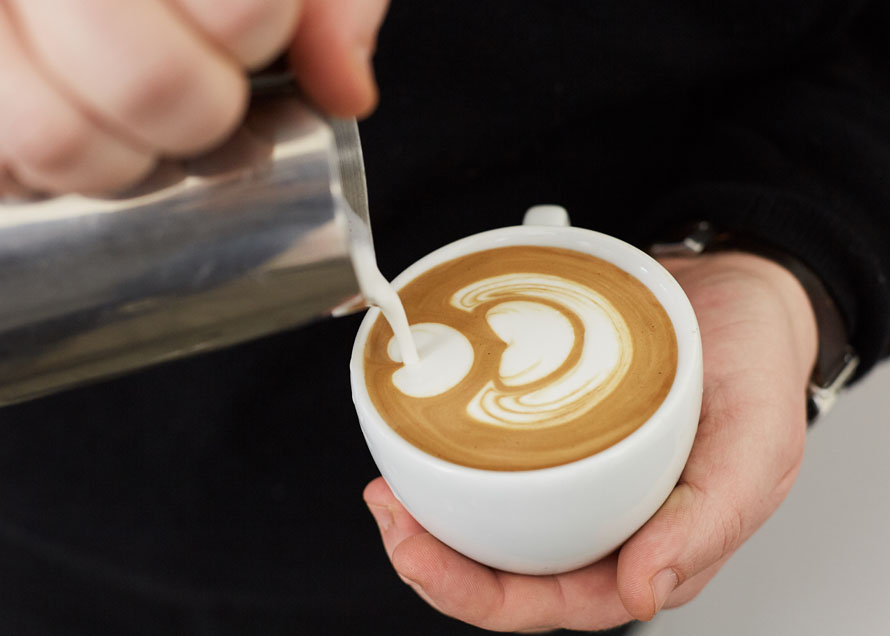
• Pour a Dot starting in the center of your cup, this will be your base.
• Using the flow of milk, Stack or Push another Dot into/on top of your base. Use the Wiggle to add panache to your pour.
• Repeat as many times as you’d like. Experiment with different placements or Stack/Push patterns for different textures and layers. Varying the proximity of your layers can add exciting textural contrast as well, and can be a good way to create your own signature Tulip.
• Pour a final Dot and Cut through to stitch the design together and make the stem of your Tulip.
Next-Level Pours
Those same basic skills can empower you to pour nearly anything you can envision with enough practice. These will take a little more patience and control, but you can pour beautiful designs like Swans and Framed Rosettas using everything we’ve covered already.
The Swan:
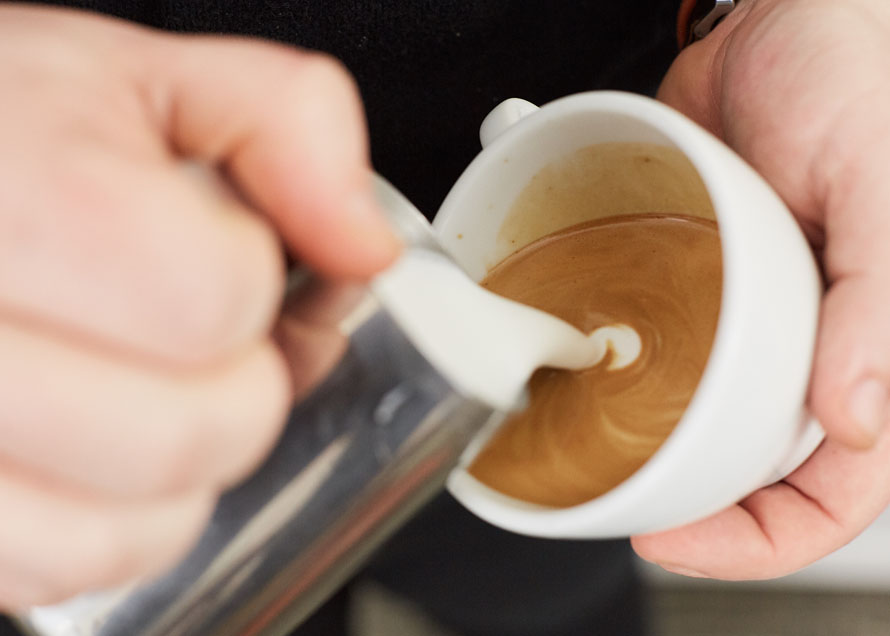

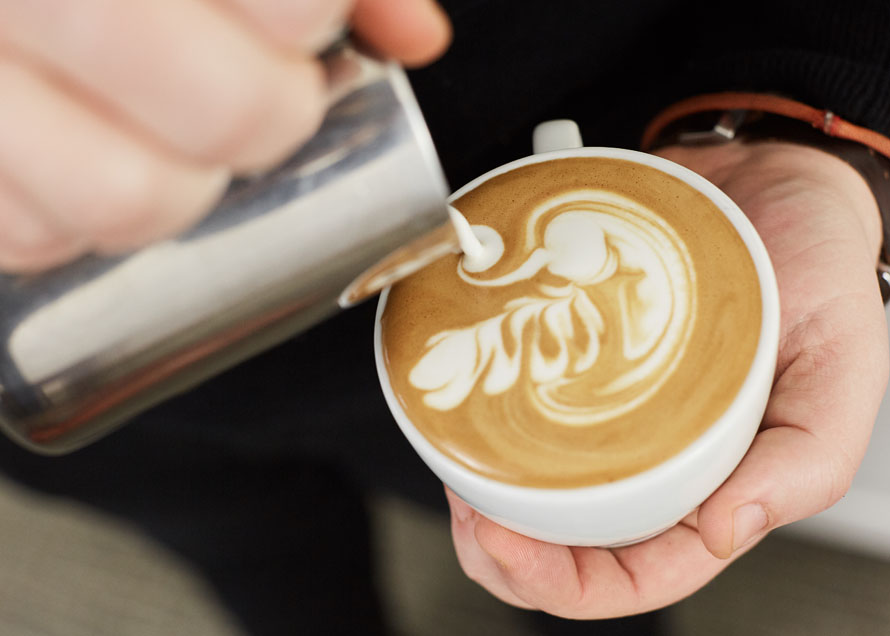
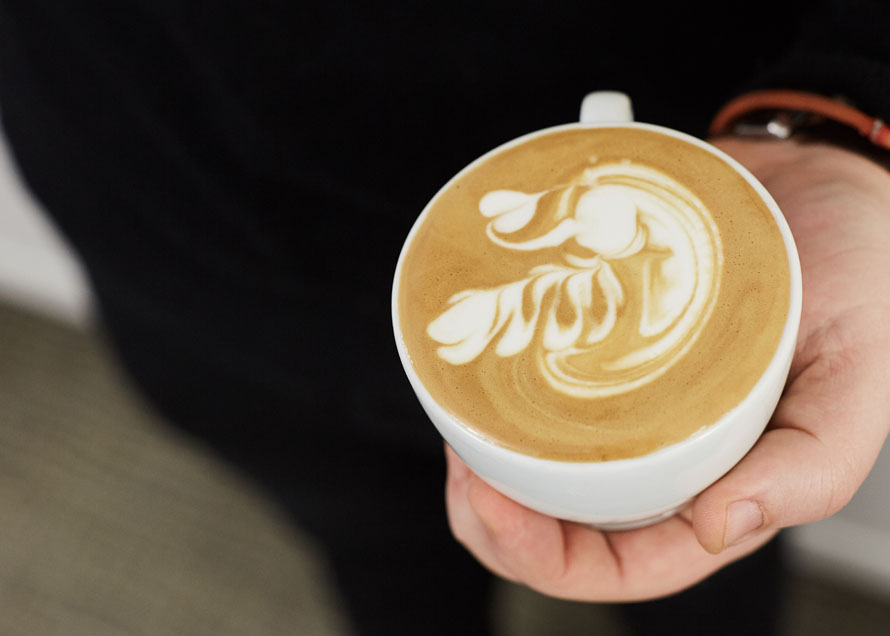
• Begin your design with a Wiggle base in the center of the cup like you would for a Rosetta, allowing it to bloom and mostly fill the width of the cup. This is the body of your Swan.
• Slow your Wiggle and flow, pulling out of the base and drawing waves off-center as you ascend (either to the left or right of center), beginning the shape of the wings.
• Lift your pitcher slightly and Cut through the edge of your waves inside of the design (toward the center of the cup, relative to your off-center waves) all the way back down to the top of your base to finish the wings of your Swan.
• Move the pitcher to the surface of your cup, placing a Dot where your waves meet the base of your design.
• Draw a line up and out of the Dot in a flowing motion by keeping the spout tip at the surface of the beverage while moving the pitcher in the direction you mean to make your line. This line will make the neck of the Swan.
• Finally, place a small Dot at the top of the neck, Cut through to make a small Heart for the head and beak.
The Hanging Heart/Wave Heart:
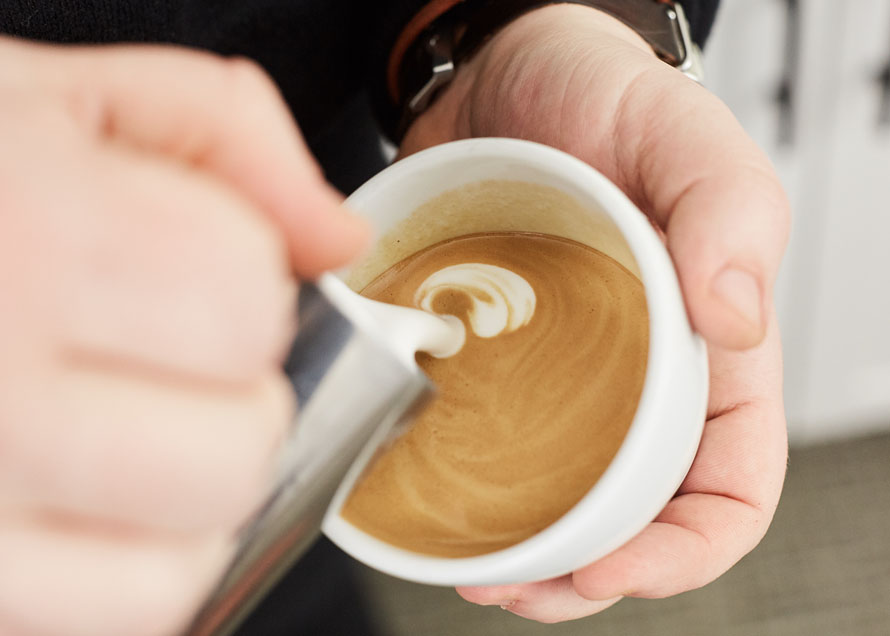
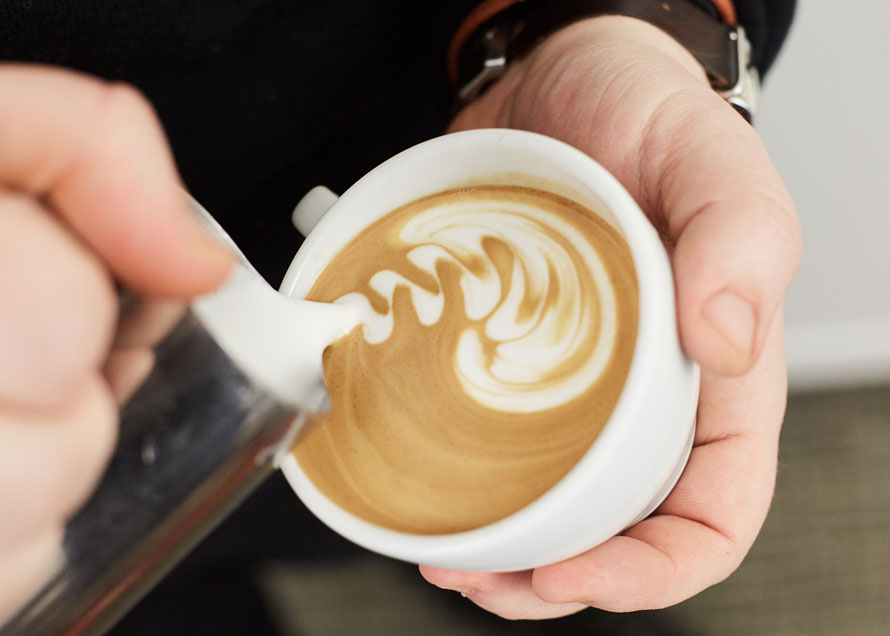
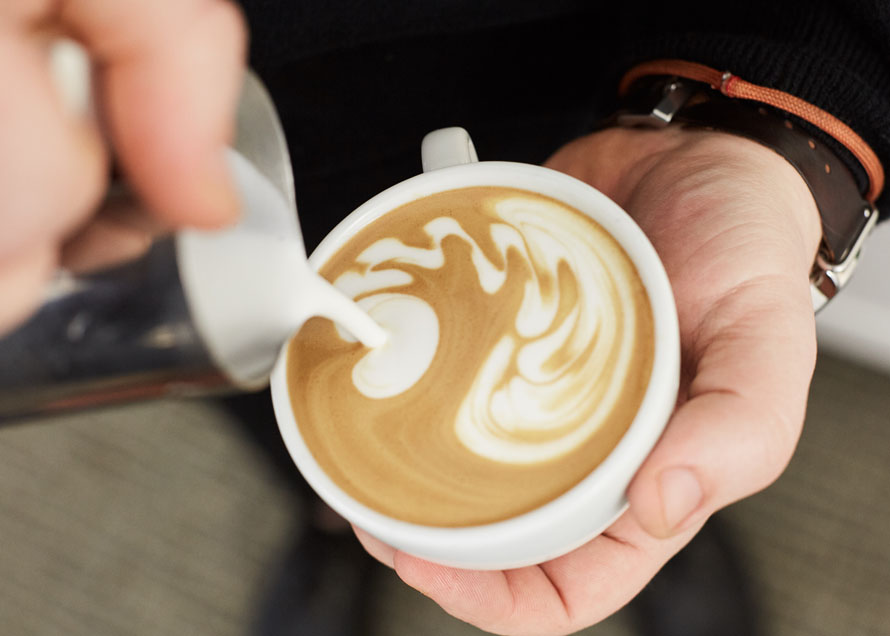
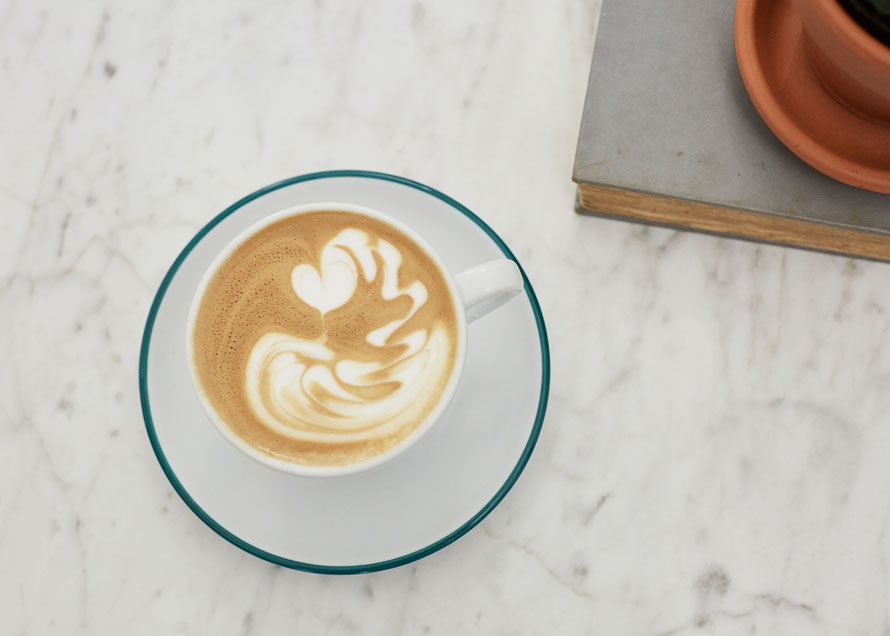
• Begin your design by pouring off-center (left-to-right) nearest to your body, halfway into the cup or deeper.
• Using a high flow rate and broad Wiggle, make a wave pattern using the flow of milk to wrap around the outside of the cup.
• Continue the wave pattern around to the top of your cup.
• Continuing the flow of milk, move your spout into position to create a standard Heart that will appear centered in the cup.
• Slow the flow of milk and Cut through your Heart, ending the Cut before you drag your Heart into the waves you’ve made around the perimeter.
Rosetta Frames:

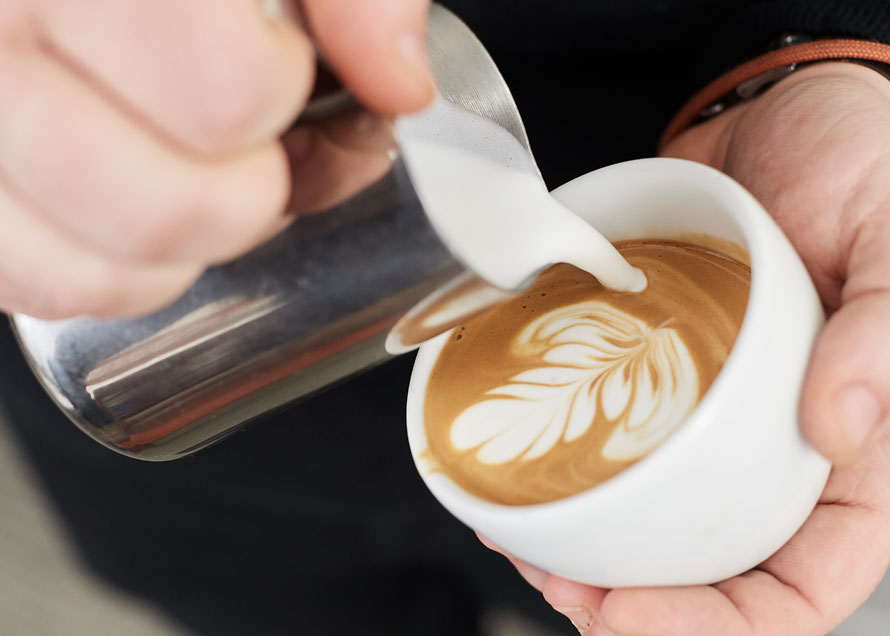
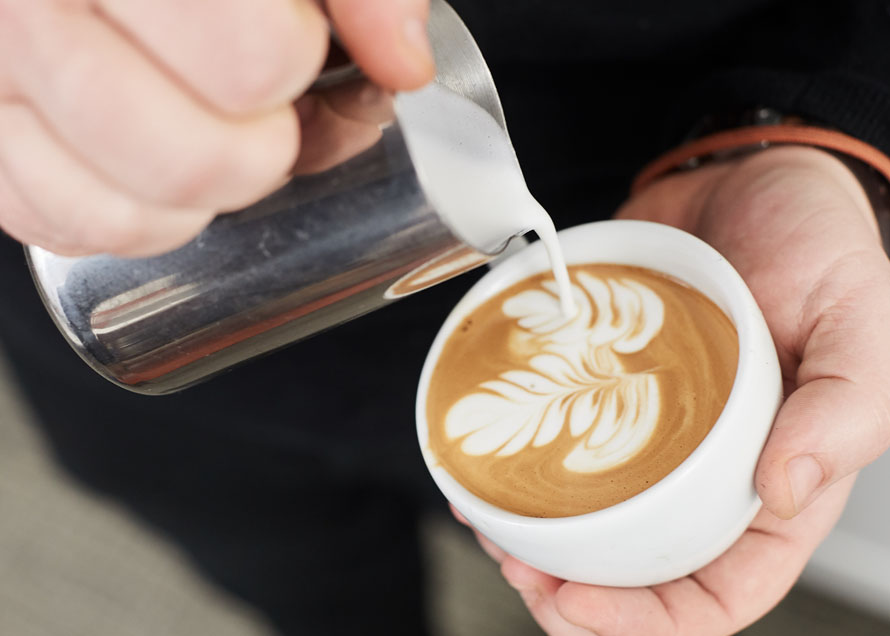

• Begin by pouring your primary design, typically a Rosetta or Tulip, but with higher-than-usual placement in the cup. This leaves room for the frame below your primary design.
• Using low flow-rate, pour small waves beginning below your primary design and pulling off to the left or right side of your cup and design.
• Cut through your first Rosetta branch.
• Repeat your small Rosetta design, pulling to the opposite side this time.
• For extra flair, leave enough space between the two branches of your Rosetta Frame to place a small Heart between the two.
Tips & Troubleshooting
Latte art is a skill rife with difficulties, but luckily most problems are solved easily with small updates to your steaming technique or pouring posture. Here are some of the most common pitfalls that folks find themselves up against as they learn.
My designs look “blobby.”
Your milk texture is too thick to pour clean designs. Introduce less air when steaming and be sure that you’re getting good swirling motion in your pitcher while grooming your milk to incorporate the air completely or
Your milk isn’t properly groomed or was left to sit for too long, leaving the microfoam separated from the liquid milk. Swirl for longer and/or more aggressively.
My designs are “wispy.”
Your milk texture is too thin to pour clean designs. Introduce more air when steaming and be sure that you’re getting good swirling motion in your pitcher to incorporate the air completely.
My designs are off-center/asymmetrical when they shouldn’t be.
Your angle of attack (the orientation of the pitcher and spout relative to the cup) is off-balance. Check your pouring posture and ensure that the direction of your pitcher is perpendicular to the cup and that your pitcher and cup aren’t rotated on their axis relative to each other and
Check that you’re pouring in the center of the cup and not to the left or right of center.
Can I pour latte art with alternative milks?
Definitely! Different alternatives will have varying protein and fat contents (necessary for making microfoam), so many of them will require slightly less aeration that you might expect for whole milk. Be sure to groom your alternative milk thoroughly after steaming, as they will likely separate faster than whole milk does.
My designs aren’t appearing on the surface of my espresso.
You’re not getting close enough to the surface of the liquid with your pour or
You’re not pouring with high enough flow rate
My waves are uneven or jagged.
Your Wiggle is uneven or erratic. Practice your Wiggle motion, using water in your pitcher in place of milk, to get the feel for creating an even and fluid pendulum motion with the liquid coming out of your pitcher.
Get practicing! Latte art gets easier the more you do it, and developing a little muscle memory is the trick to being able to produce clean and glorious designs time and time again. Once you’ve got the basics handled you can start exploring resources like YouTube or Instagram for more complicated designs to tackle, and if you get really good you can even start stacking up likes on your favorite social media platform.
Happy pouring, y’all.



